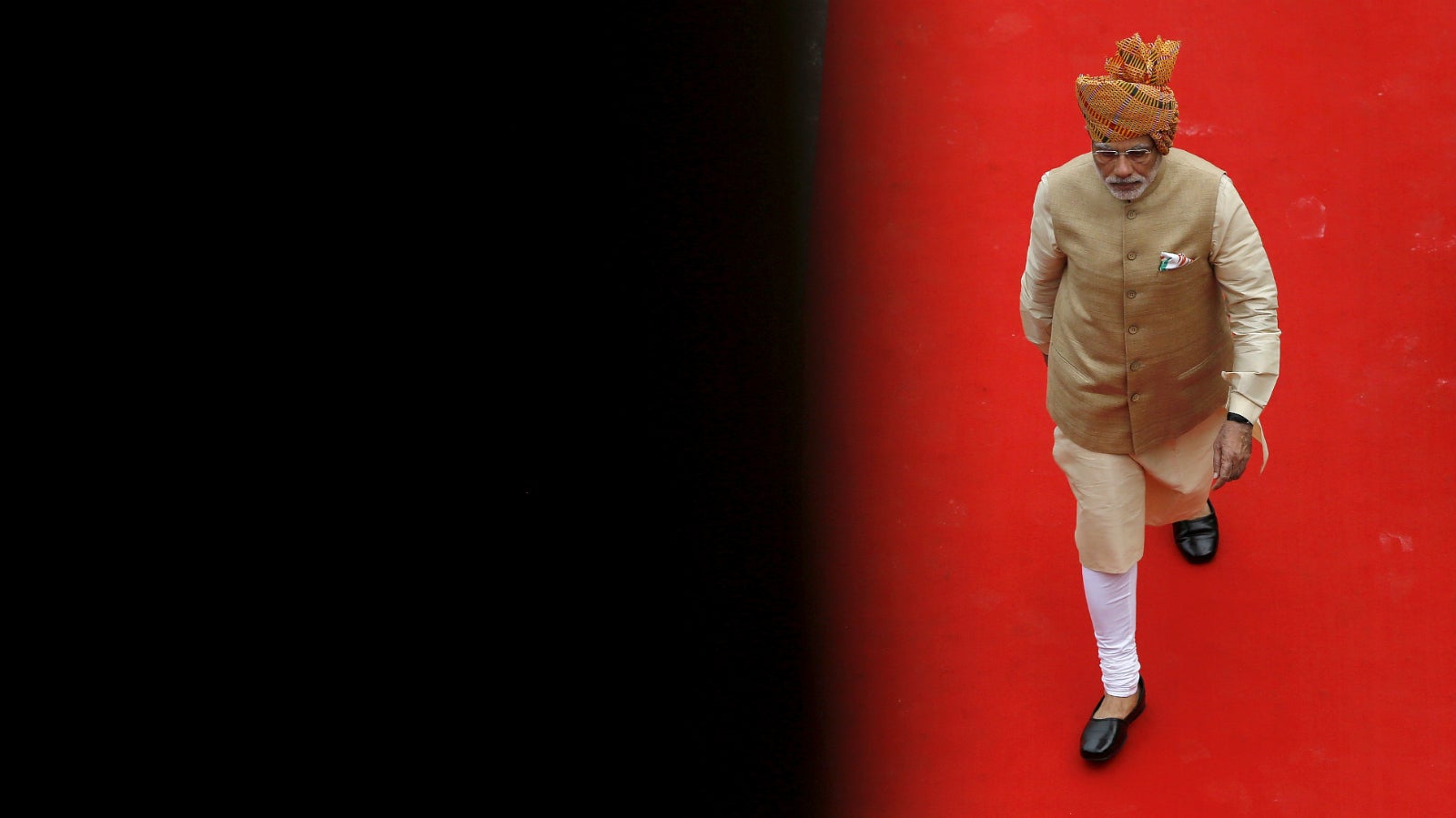With a big win in the bag, it’s time for Narendra Modi to stand up and deliver on reforms
India’s endless electoral carousel has completed another spin, and it’s been a good round for the ruling Bharatiya Janata Party (BJP).


India’s endless electoral carousel has completed another spin, and it’s been a good round for the ruling Bharatiya Janata Party (BJP).
Backed by whatever little was left of the wave that swept Narendra Modi into power two years ago, the BJP has clinched the northeastern state of Assam, and posted its best performance ever in West Bengal. It even managed to find a way into Kerala, winning its first ever assembly constituency in the southern state.
Understandably, the prime minister is pleased. “Across India, people are placing their faith in BJP & see it as the party that can usher in all-round & inclusive development,” Modi tweeted after the numbers trickled in around noon on May 19.
Yet, as Quartz has argued before, Modi’s first 24 months in New Delhi haven’t exactly seen the sort of extensive overhauling of the economy that many expected. Despite winning the biggest mandate in three decades, the Modi government has mostly tweaked and tinkered.
The government’s failure to push through key reforms is partly because of its own inability to create consensus, and partly because an opposition, led by the Congress party, has relentlessly created obstructions in parliament. But having been kicked out of power in both Assam and Kerala, the Congress will likely be on the back foot. Meanwhile, victorious regional satraps—namely West Bengal’s Mamata Banerjee and J Jayalalithaa in Tamil Nadu—may well look to push the reset button with the BJP.
With political momentum on his side, this is also the right time for Modi to push the reset button for his government’s reform agenda.
The badly-needed-but-perennially-delayed goods and services tax (GST) bill, which is stuck in the Rajya Sabha partly because of an obstinate Congress party, could be the first big move. Banerjee, for one, has already signalled her support. ”We have ideological differences with BJP but we will always support on issues that are beneficial to the people,” the Trinamool Congress chief said on May 19. “We will support (the) GST.”
If the landmark tax legislation does make it through the upper house, it’ll do much to boost the Modi government’s investor-friendly image. It will also come pretty handy when the BJP lines up for the next round of assembly elections—in Punjab and Uttar Pradesh—that are due next year.
Between now and then, Modi would do well to gun for any other big reforms he might want to undertake. The list could potentially include a big round of privatisation of India’s beleaguered state-owned firms, opening up more sectors to foreign capital and cutting down much more aggressively on red tape that’s still holding back growth and investments.
If the prime minister chooses to wait too long, he’ll once again find himself going in circles on India’s never-ending election merry-go-round.
We welcome your comments at [email protected].